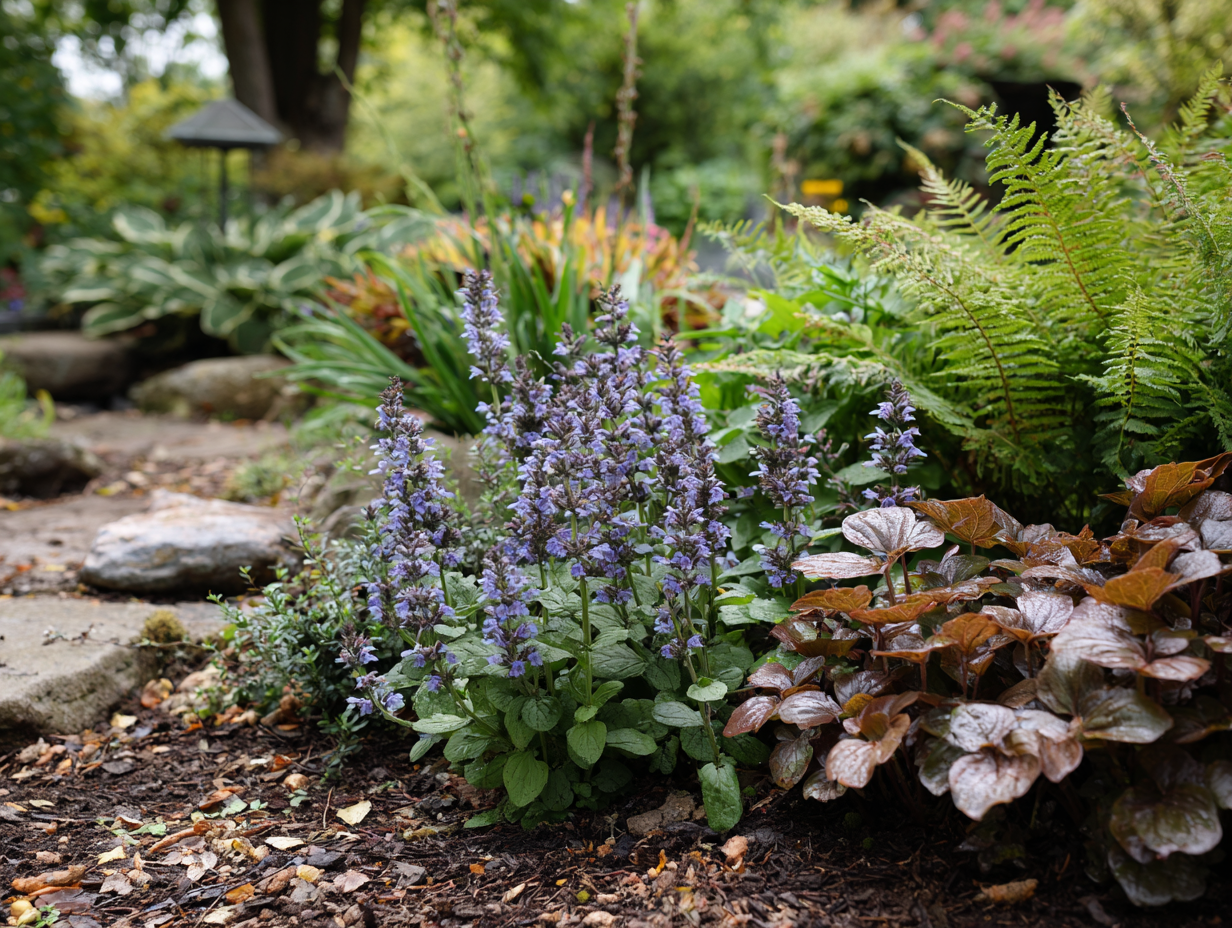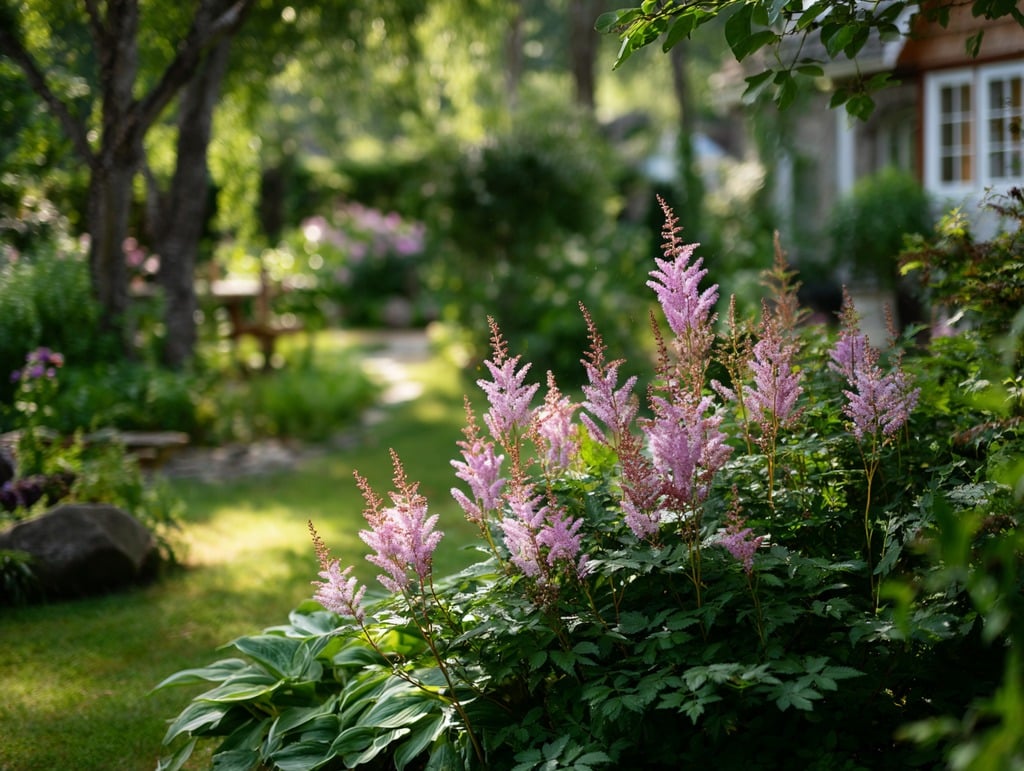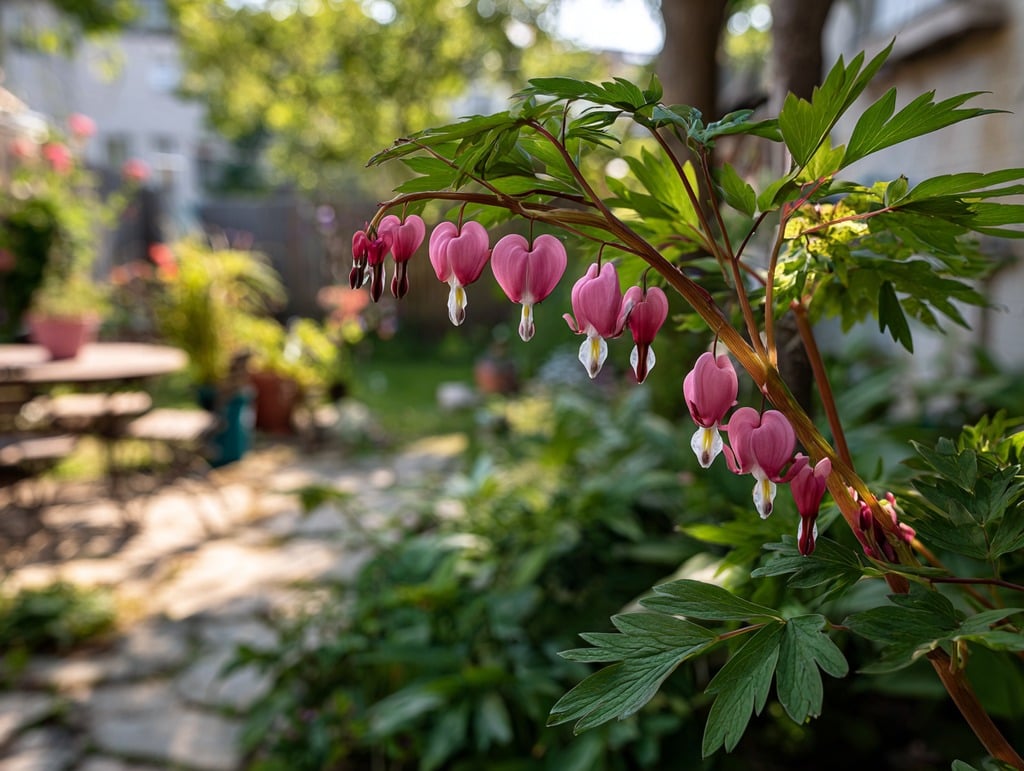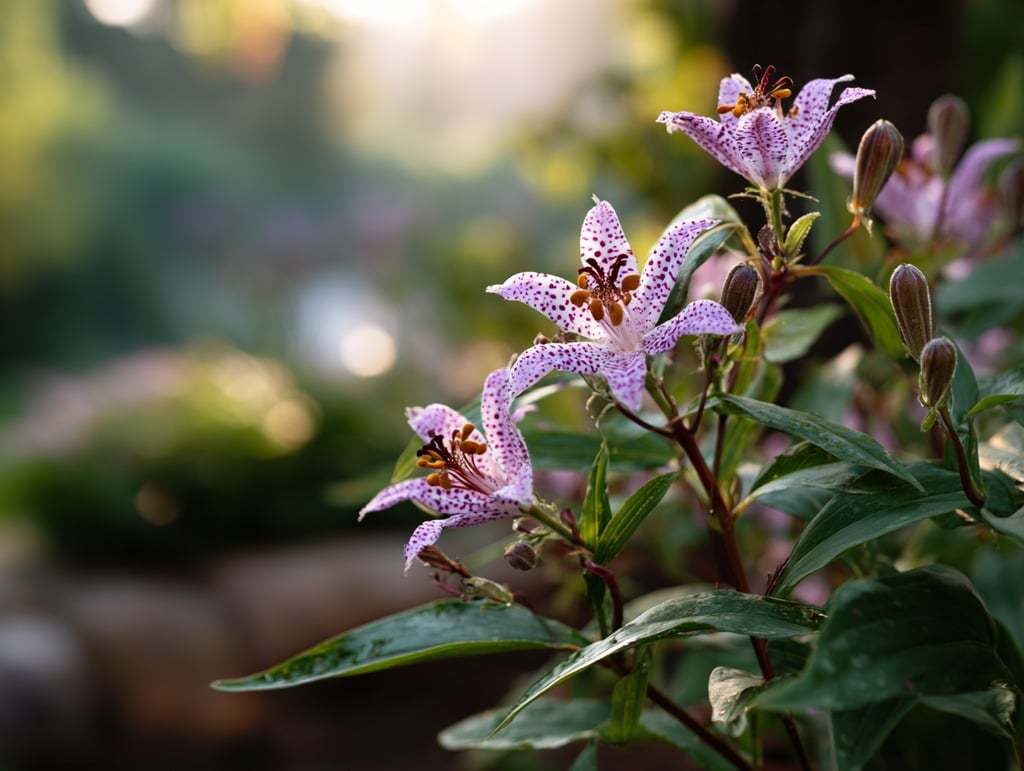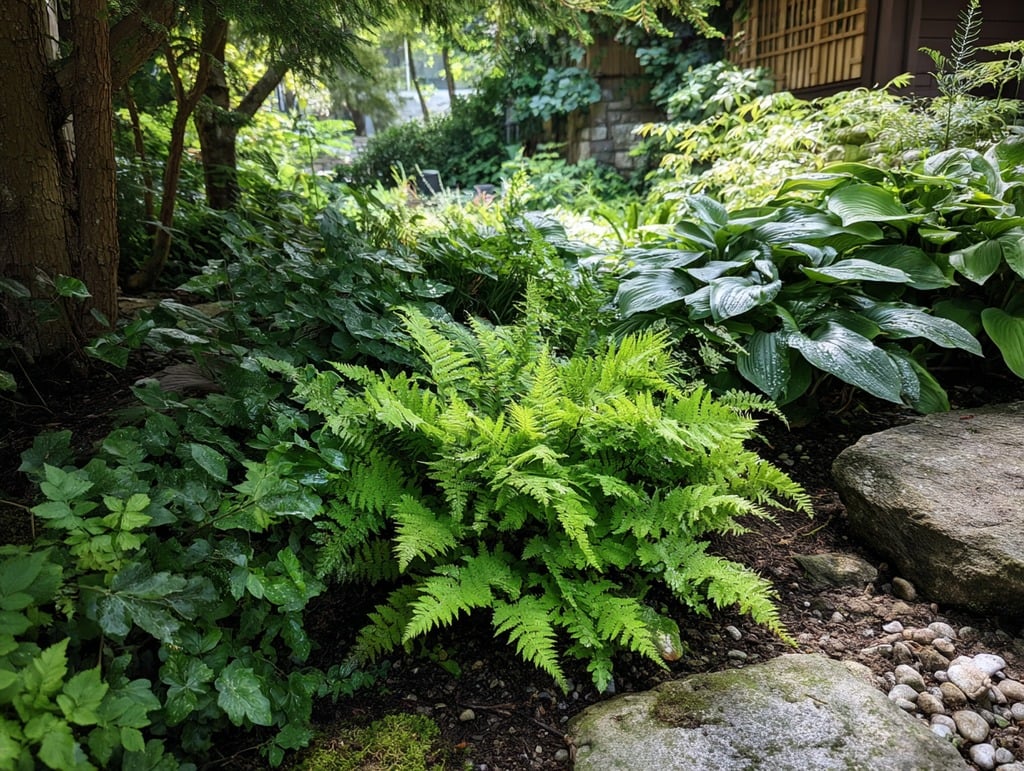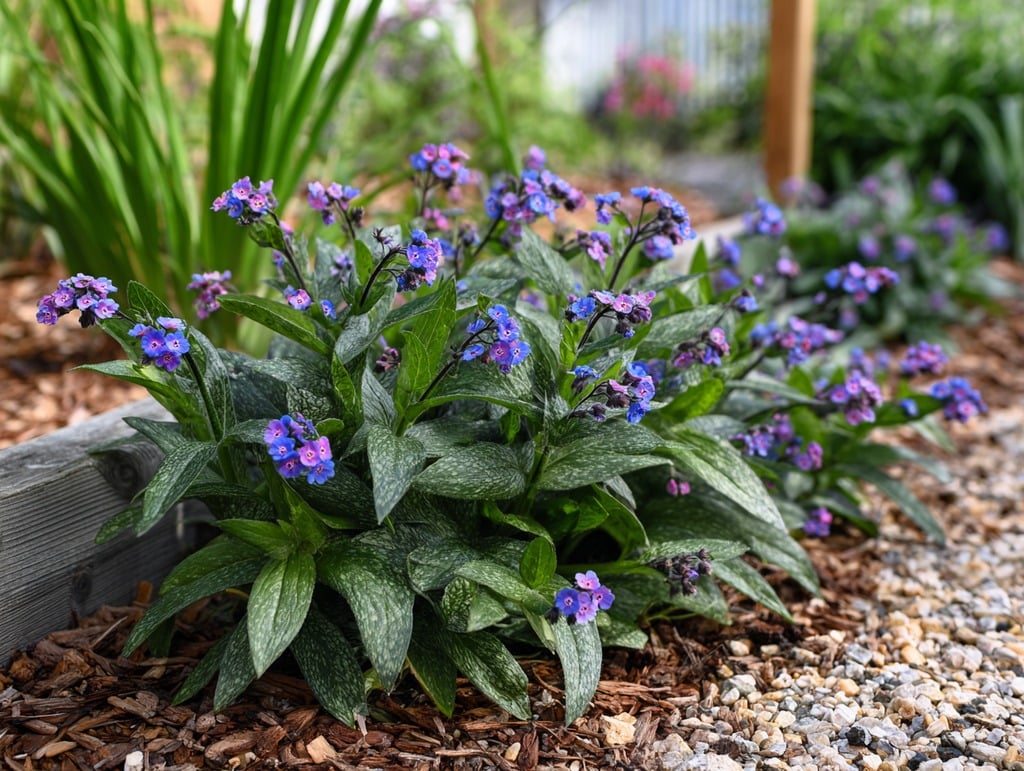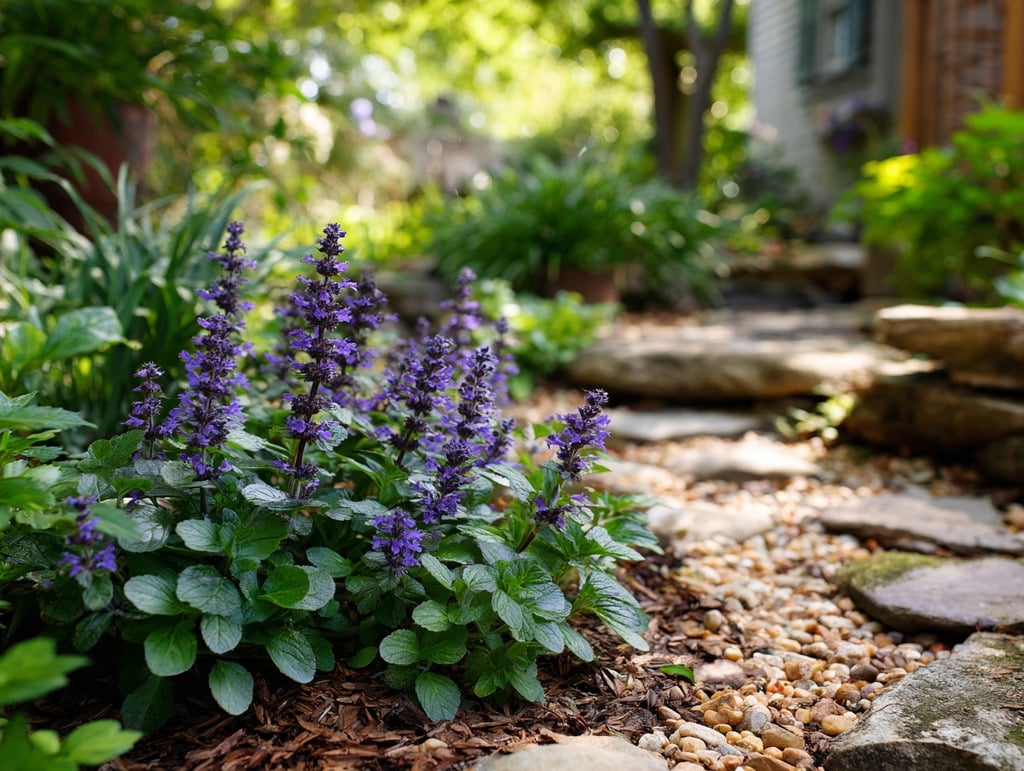When it comes to creating a beautiful and vibrant garden, sunny spaces often get all the attention. But shaded areas—whether under mature trees, along fences, or on the north side of a home—can offer just as much potential for lush, eye-catching landscapes. In fact, there are a wide variety of plants that not only tolerate low light but absolutely thrive in it. With the right plant choices, you can turn even the darkest corners of your yard into a thriving oasis filled with color, texture, and life. Whether you’re dealing with full shade or dappled light, these shade-loving perennials and groundcovers are ready to bring new energy to your garden.
Please note: This blog contains affiliate links. If you choose to click the link and make a purchase, the author will receive compensation. This is at no extra cost to you. It’s like a high-five for providing useful content.
1. Hostas (Hosta spp.)
Best for: Ground cover and foliage variety
USDA Zones: 3–9
Hostas are quintessential shade garden staples. Their broad, textured leaves come in a spectrum of greens, blues, and variegated patterns, providing a lush backdrop in shaded areas. Beyond their aesthetic appeal, hostas are low-maintenance and can adapt to various soil types, making them ideal for both novice and seasoned gardeners.
2. Astilbe (Astilbe spp.)
Best for: Pops of floral color in moist shade
USDA Zones: 4–9
Astilbes bring a feathery elegance to shaded garden beds. Their fern-like foliage is complemented by vibrant plumes of pink, red, white, or lavender flowers. Preferring moist, well-drained soil, astilbes are perfect for woodland gardens or alongside water features.
3. Japanese Forest Grass (Hakonechloa macra)
Best for: Ornamental groundcover and texture
USDA Zones: 5–9
With cascading, golden-green blades, Japanese forest grass adds a zen-like ambiance to shaded corners. Its graceful arching form provides movement and texture, making it a favorite for borders and underplanting beneath trees.
4. Bleeding Heart (Dicentra spectabilis)
Best for: Cottage gardens and romantic vibes
USDA Zones: 3–9
Bleeding hearts are known for their delicate, heart-shaped flowers that dangle from arching stems. Blooming in spring, they add a touch of whimsy and romance to shaded garden spots. Their foliage dies back in summer, so pairing them with later-blooming plants ensures continuous interest.
5. Coral Bells (Heuchera spp.)
Best for: Colorful foliage in containers or beds
USDA Zones: 4–9
While coral bells do produce flowers, their true allure lies in their vibrant foliage, which ranges from deep burgundy to lime green. These perennials are versatile, thriving in both garden beds and containers, and they attract pollinators like hummingbirds and butterflies.
6. Toad Lily (Tricyrtis spp.)
Best for: Exotic, late-season blooms
USDA Zones: 4–9
Toad lilies are shade garden gems, offering orchid-like, speckled flowers in late summer to early fall. They prefer moist, well-drained soil and can add an unexpected splash of color when most other plants are winding down for the season.
7. Ferns (Various species)
Best for: Lush, textural filler
USDA Zones: Varies by species
Ferns, with their intricate fronds, bring a prehistoric charm to shaded areas. From the delicate maidenhair to the robust ostrich fern, these plants thrive in damp, humus-rich soils, making them perfect for forest-like garden settings.
8. Lungwort (Pulmonaria spp.)
Best for: Dappled shade under trees
USDA Zones: 3–8
Despite its unappealing name, lungwort is a delightful addition to shade gardens. Its speckled or silver-dusted leaves provide visual interest, while clusters of pink, blue, or purple flowers bloom in early spring, offering one of the first nectar sources for pollinators.
9. Brunnera (Brunnera macrophylla)
Best for: Heart-shaped leaves and early blooms
USDA Zones: 3–8
Often referred to as “false forget-me-not,” brunnera boasts charming sky-blue flowers in spring and heart-shaped leaves that often feature silver or white variegation. It’s particularly useful for brightening up dark corners of the garden.
10. Foamflower (Tiarella cordifolia)
Best for: Native plant gardens and pollinator appeal
USDA Zones: 4–9
Foamflower is a North American native that brings woodland charm to shady spots. Its fluffy, white or pink flower spikes bloom in spring, and the foliage often turns bronze or red in the fall, providing multi-season interest.
11. Ajuga (Ajuga reptans)
Best for: Spreading groundcover in partial to full shade
USDA Zones: 3–10
Ajuga, also known as bugleweed, forms dense mats of colorful foliage and sends up spikes of blue, pink, or white flowers. It’s excellent for erosion control on slopes and can quickly fill in bare spots in the garden.
Designing Your Shade Garden
Creating a thriving shade garden involves more than just selecting the right plants. Consider the following tips to enhance your shaded spaces:
Layering: Combine groundcovers, mid-height plants, and taller shrubs or trees to create depth and visual interest.
Color Contrast: Use plants with varying foliage colors and textures to add dimension. For instance, pair the silver leaves of lungwort with the deep burgundy of coral bells.
Seasonal Interest: Incorporate plants that bloom or have striking foliage at different times of the year to ensure continuous appeal.
Moisture Management: Shaded areas can retain moisture longer. Ensure proper drainage to prevent root rot, and adjust watering schedules accordingly.
By thoughtfully selecting and arranging shade-loving plants, you can transform dim garden corners into enchanting retreats teeming with life and color. Embrace the unique beauty that shade gardens offer, and let these resilient plants shine in their own right.

